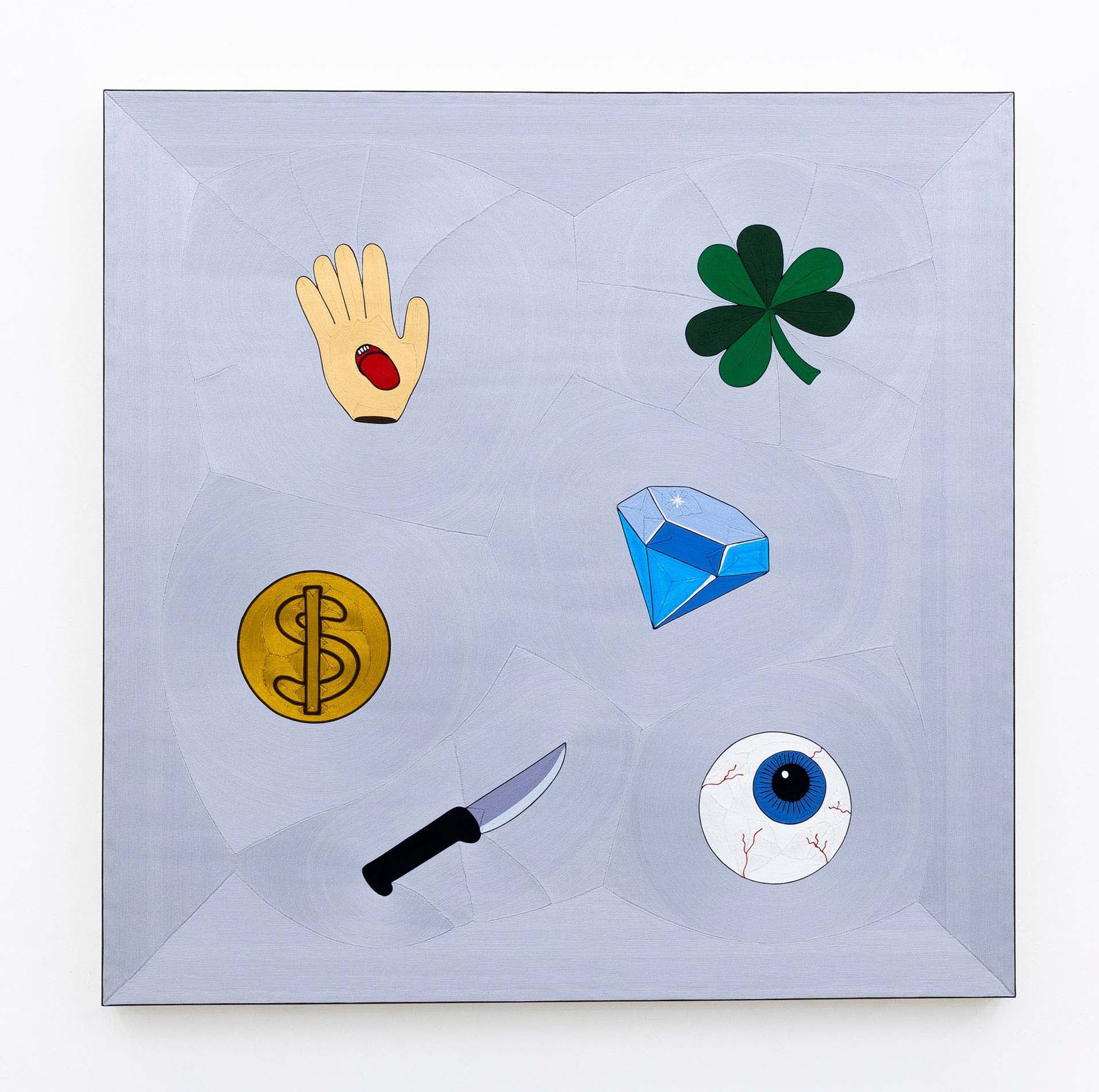For some time, I was looking for a technique that would allow me to transfer the aesthetic of some of my sculptures to a two-dimensional format in order to graphically enhance the visual force and magic of the pieces. This led me to find a traditional technique known as “Nierika,” images created through spreading beeswax onto wooden boards, and pressing in hand-painted yarn designs, crafted by the Wixarikas or Huicholes in San Andrés Cohamiata, a village in the middle of a mountain range in the north of the state of Jalisco, México.
This technique is used to represent the gods of these people, and also to represent the visions that their shamans have. I believe that this makes the relationship between the images that are depicted in this series and their meaning clearer. These pieces were elaborated in the family workshop of the master Manolo Castro Montoya ‘’Muwieritemay’’.
— Gabriel Rico
Gabriel Rico’s work is characterized by the interrelation of seemingly disparate objects. A self-proclaimed “ontologist with a heuristic methodology,” Rico pairs found, collected, and manufactured materials to create sculptures that invite viewers to reflect on the relationship between humans and our natural environment. He frequently uses neon, taxidermy, ceramics, branches, and more personal pieces of his past to create an equation or formulation, achieving a precise geometry despite the organic, roughly hewn character of his materials. His installations ironically and poetically combine natural and unnatural forms, insisting on a necessary contemplation of their asymmetry as well as our own cultural and political flaws.
The artist was featured in the 2019 Venice Biennale group exhibition, May You Live In Interesting Times, curated by Ralph Rugoff. He has held numerous solo exhibitions across the world including the Power Station, Dallas, in 2017. Rico is in the collection of The Nasher Sculpture Center, Dallas; Pérez Art Museum Miami; Korean Ceramic Fundation, Seoul; Museo de Arte de Sinaloa, Culiacan, among others.
[excerpted from Perrotin website: www.perrotin.com]
